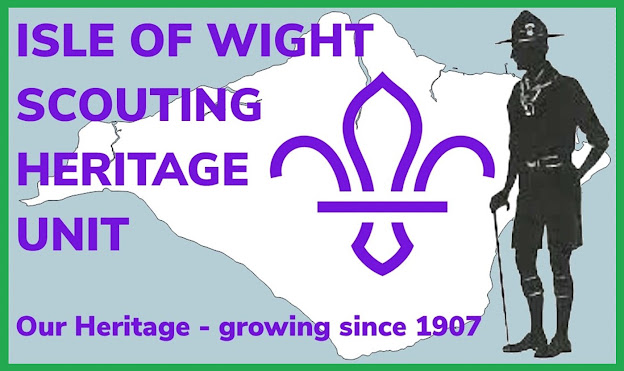The Second Chief Scout
Did you know that the second Chief Scout (1941-1944), Lord Somers KCMG, DSO, MC was born and lived the early part of his life on the Isle of Wight?
From Meet The Chiefs Fact Sheet: -
Arthur Herbert Tennyson Somers-Cocks, 6th. Baron Somers, was born at Freshwater, Isle of Wight, on March 20th, 1887. He was educated at Mulgrave Castle, Charterhouse and New College, oxford. He joined the 1st Lifeguards, but cut short his Army career to farm in Canada. With the outbreak of war in 1914, he returned to rejoin his Regiment and was subsequently attached to the Tank Corps. He retired from the Army in 1924, having become actively interested in scouting two years previously. In 1926 Lord Somers was appointed Governor of Victoria, Australia, and State Chief Scout. He led the 8,000 British Scouts to the World Jamboree in Holland in 1937. During the following winter he travelled the country visiting Scouts and talking at Scout conferences. He also undertook the task of putting the Movement on a sound financial footing with the launching of a National Scout Fund in 1938. When war was declared, Lord Somers gave an immediate lead in support of the National Service. He recommended that Scouts wear their uniforms and set the example when, for the first time in history, Scout uniform was seen in the House of Lords.
Additional Information from “75 Years of Scouting”
Local research has shown that Lord Somers had a very
troubled early life. He was born Arthur Herbert Tennyson Somers-Cocks in
Freshwater in 1887 to Herbert Haldane and Blanche Margaret Standish. He had an
elder sister, Verena, who was one year older. He was baptised in Freshwater on
April 3rd. 1887. He was brought up in “The Briary” Middleton,
Freshwater {see picture above}. Arthur’s father died aged 32 in 1884 and his mother died on exactly
the same day one year later. After his mother’s death, when he was only eight
years old, he was sent to Mulgrave Castle and boarded there. Aged 12 he
succeeded the title from his Uncle and became Lord Somers. It was during his
school life, and later in the Army, that Lord Somers befriended Baden-Powell
and developed his life long interest in scouting.
The Briary still stands today, although it is not the original one built in 1873 that Lord Somers lived in. Unfortunately in the early 1930’s the house’s roof caught fire and was seriously damaged. The first fire team on the scene was the Freshwater Rover Scouts Fire Brigade see photo above}. Despite a shortage of water, the local lads restrained the fire to a central chimneystack and saved many valuable items. According to a local newspaper report, the local fire brigade from Newport had difficulty getting to the scene due to a heavy load of men and equipment; they also had difficulty negotiating the steep hill at Carisbrooke. By the time they arrived on the scene flames had allegedly reached a height of thirty feet. It was also remembered by the locals that the hosepipes had so many holes in them that very little water actually reached the scene of the fire, although the gardens had a refreshing shower. Damage was estimated at £7,000 (enough to purchase about twenty normal family houses at the time). The house was rebuilt and was much smaller than the original and far less grand. Mr. & Mrs. Malcolm Gould currently occupy the house.









